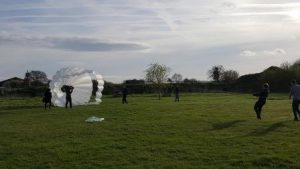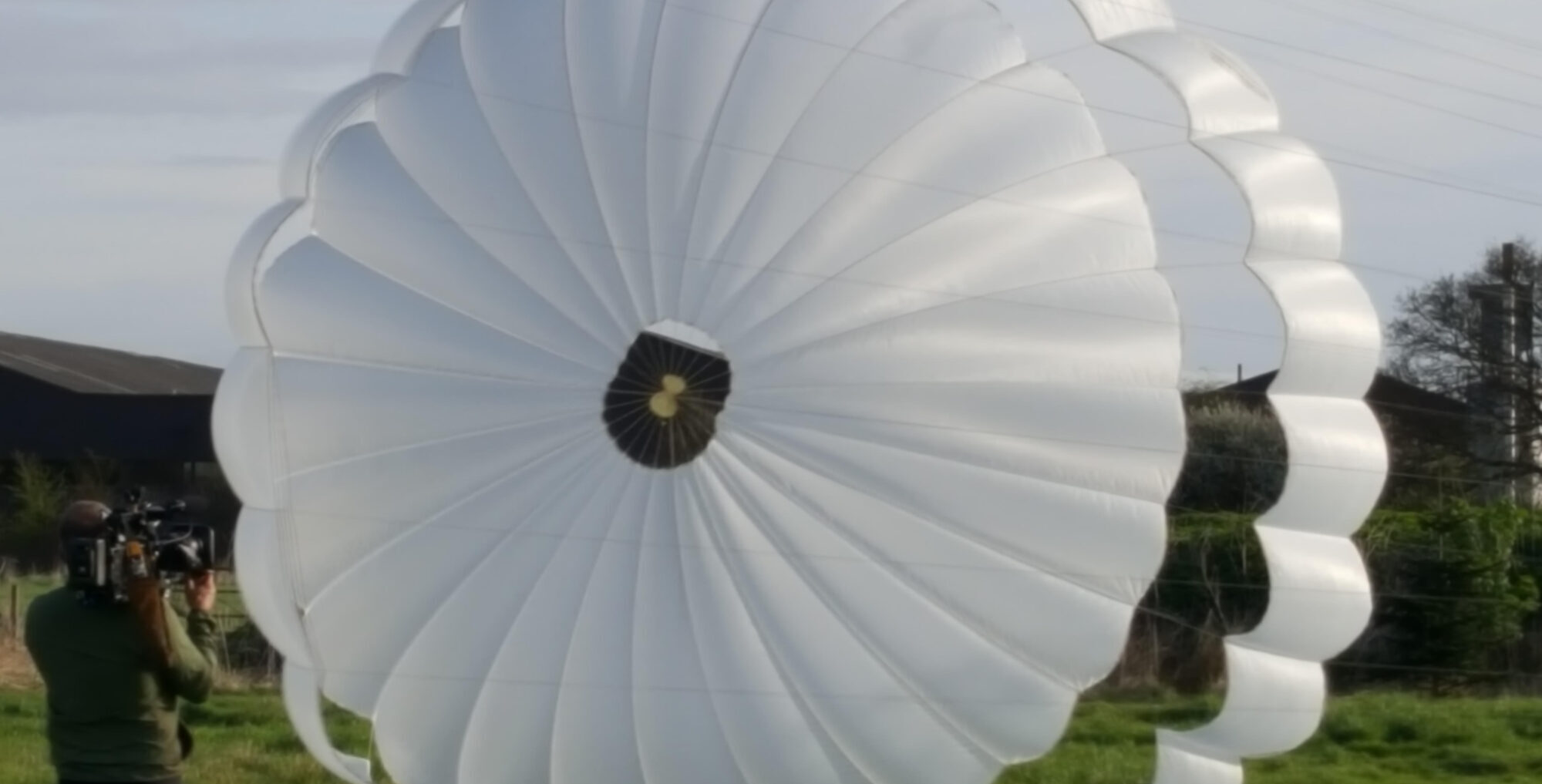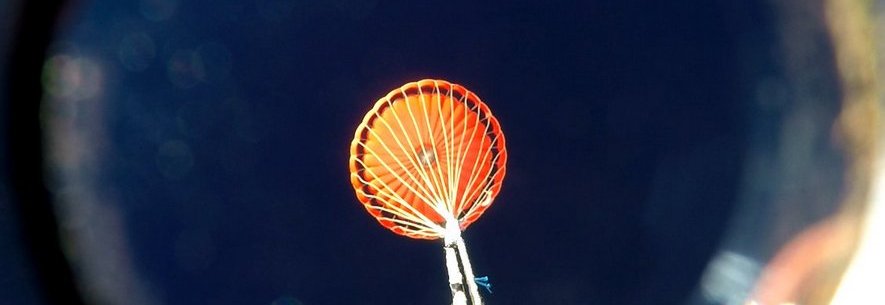The SUPERMAX mission (Supersonic Parachute Experiment Ride on a MAXUS rocket) was flown successfully on the MAXUS 9 flight which took place on 7th April 2017. This test parachute deployed at supersonic velocity, demonstrates Europe’s capability to land safely from space.
SuperMAX is calling home…
#SuperMAX is calling home! We have signal & confirmation of parachute deployment #MAXUS9.
SuperMAX, the test vehicle, is hitching a ride. Unlike the other experiments, the capsule will detach after the Maxus solid-propellant motor burns out. It will travel separately to the highest point of 715 km before falling back under the pull of gravity. It will reach twelve times the speed of sound and see intense aerodynamic heating before air drag decelerates it to Mach 2 at an altitude of 20 km. A 1.25 m-diameter supersonic parachute will then deploy to stabilise it for a soft landing. An onboard computer will record data and images.
The SUpersonic Parachute Experiment Ride on MAXus, or Supermax, has been given a piggyback on Maxus-9, lifting off from Esrange Space Center in Kiruna, Sweden 7 April 2017. Sounding rockets are launched to the edge of space and free fall back to Earth, allowing experiments to run in weightlessness before landing.
SuperMAX aims to demonstrate the use of suborbital rockets as platforms for testing supersonic parachutes. Researchers from the UK’s Vorticity Ltd and Fluid Gravity Engineering Ltd have already run experiments in wind tunnels. Though effective, wind tunnels and some rockets are expensive to employ. Piggybacking on a sounding rocket could be a more cost-efficient approach for testing future supersonic parachutes.
MAXUS9
The group in front of the #MAXUS9 payload shows only a fraction of the people involved to bring it forward #SSC #ESA #McGill #ErlangenUni #DLR/BAM #AccessIJLNancy #Vorticity #FGE
Picture Credit: SSC Rockets and Balloons
Huygens 8m parachute inflated for its 20-year launch anniversary documentary
It’s 2017 and our friends from DiscoveryCanada came to visit the team in the UK to film the Huygens 8m parachute for its 20- year launch anniversary, ably assisted by Team Vorticity. #huygens #cassinihuygens

Inflating the 8m Huygens Parachute

Team Vorticity’s Ground Crew: Steven Rogers, Aure Hugon and Marcus Collier-Wright
SCHIAPARELLI LANDING SITE
The landing site of the Schiaparelli module and the parachute can be seen in the latest pictures provided by NASA’s Mars Reconnaissance Orbiter and the Thermal Emission Imaging System (THEMIS) on NASA’s 2001 Mars Odyssey orbiter.
The bright white object at the bottom of the image is believed to be the 12-m diameter parachute used to decelerate Schiaparelli after the initial heat shield entry. The parachute and the associated back shield were released from Schiaparelli prior to the final phase, during which its nine thrusters should have slowed it to a standstill just above the surface.
Initial indications are that the parachute system, which was designed and qualified by Vorticity, operated successfully.
The dark spot on the image is associated with the Schiaparelli module.
Picture copyright NASA/JPL-Caltech/MSSS





